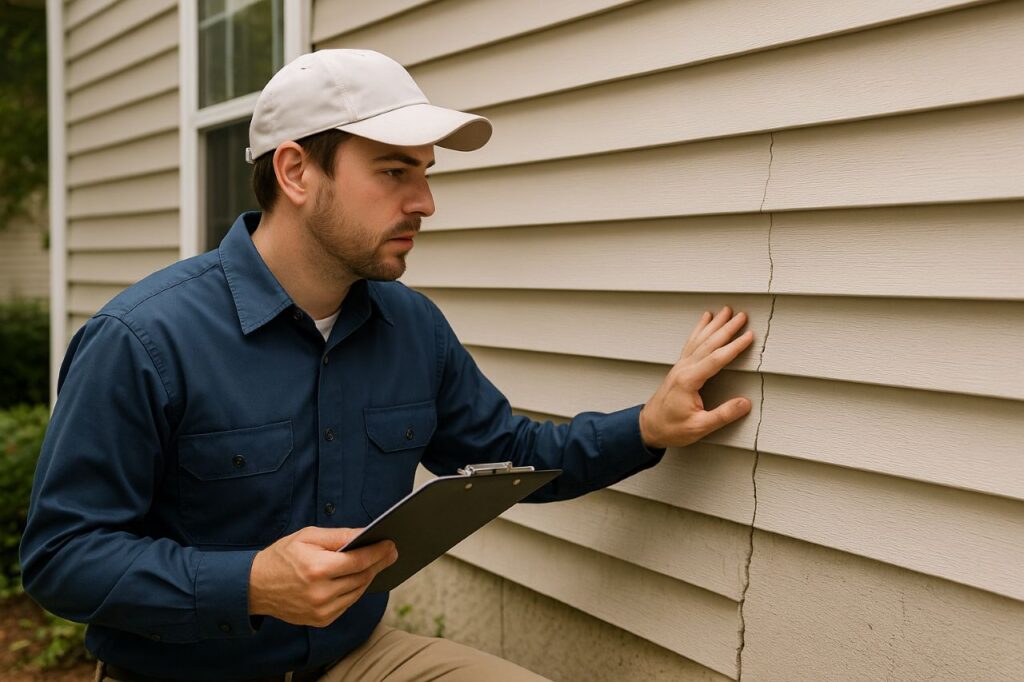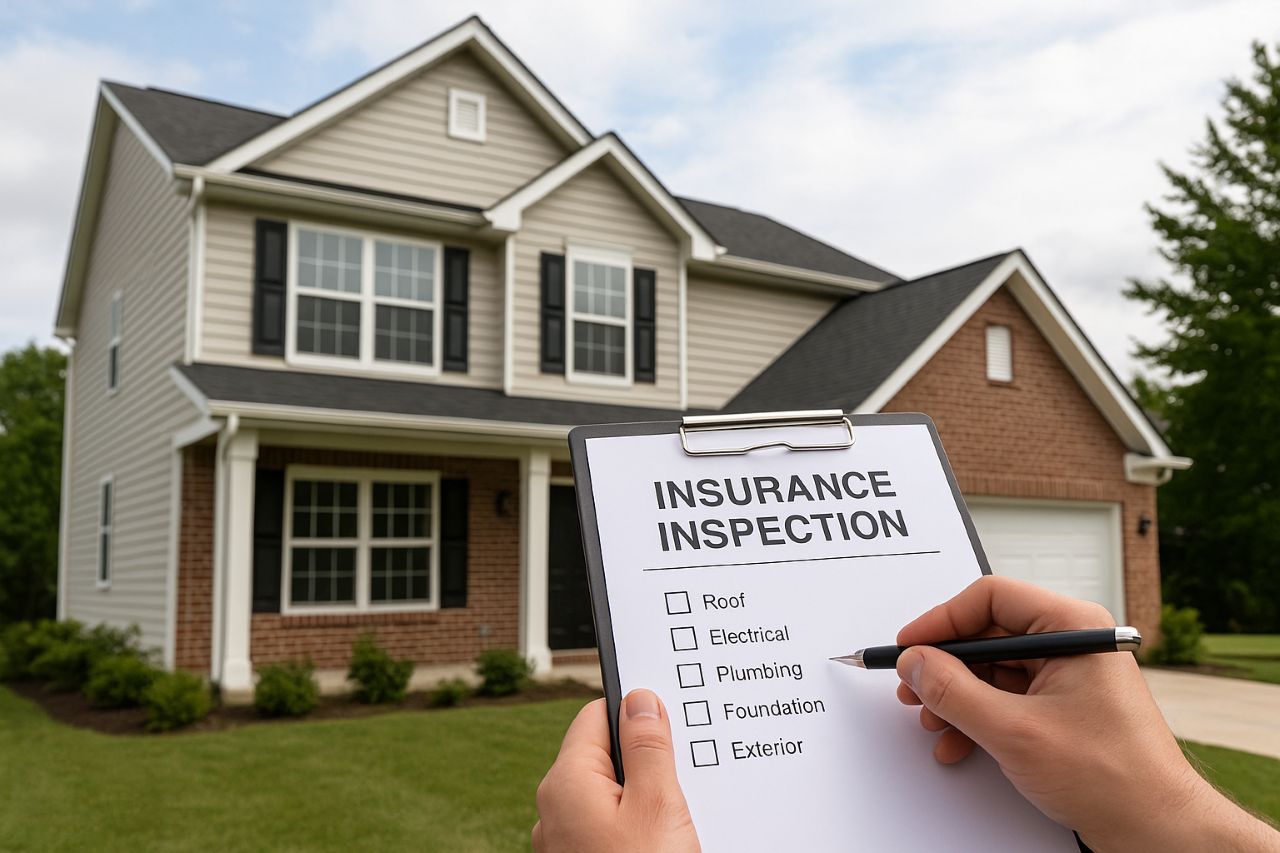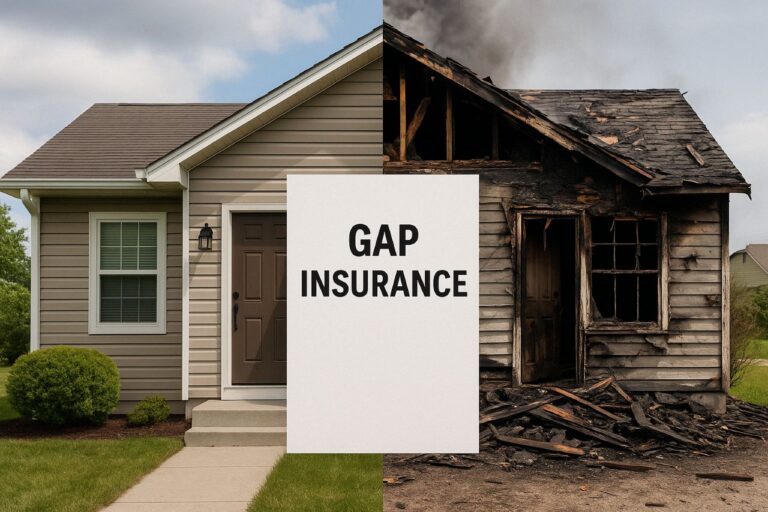Home Insurance Pre Existing Conditions: 5 Risks to Avoid
Home insurance pre existing conditions are a significant, but sometimes overlooked, part of safeguarding your home and possessions. When you take out a home insurance policy, insurers look at the state of your home and any issues that may have been there before the cover began. These problems — called “pre existing conditions” — can have a big impact on your eligibility, premiums, and even the success of future claims.
For example, if your roof showed evidence of long-term deterioration prior to the time you purchased your policy, your insurer can deny a future claim for water damage. Many homeowners are still not aware that these conditions have the potential to result in costly surprises and claim denials. Learning about how home insurance pre existing conditions work is the key to making sure you’re not left vulnerable when disaster hits.
In this article, we’re going to delve in depth into the way insurers understand and treat pre existing conditions, the risks involved, and ways you can get ahead by insuring your house and preventing denied claims.
Table of Contents
What are Home Insurance Pre Existing Conditions?

Fundamental Definition and General Examples
Home Insurance Pre Existing Conditions cover any structural damage, safety risk, or system fault that existed prior to your insurance policy going into effect. These are not only visible damage but also prior undiagnosed issues that may result in future claims.
Some of the most general examples are:
- Leaky or damaged roofs: Older or neglected roofs might already be waterlogged or structurally compromised.
- Dated or malfunctioning wiring: Homes with older knob-and-tube or aluminum wiring can be fire hazards.
- Water damage or mold: Smaller leaks if ignored can develop widespread mold buildup within walls.
- Foundation cracks: These are a sign of shifting buildings or settlement over a period of time.
- Termite infestations: Current pest damage can compromise support beams and result in substantial repair bills.
- Older plumbing systems: Rusty or older pipes (e.g., galvanized steel) are susceptible to leaks or rupture.
Insurance providers can either exclude coverage for these problems or raise your premiums considerably if they are not repaired before policy issuance. In other instances, they can even deny coverage altogether.
Tip: It’s a good idea to have a home inspection and fix these problems before applying for insurance. This Old House provides information on how to detect and repair some common structural issues.
How Insurers Detect Home Insurance Pre Existing Conditions
Insurers make careful evaluations to determine any home insurance pre existing conditions. Their aim is to prevent paying for pre-existing damage that the homeowner may subsequently attempt to claim as “new.”
Key techniques employed include to detect Home Insurance Pre Existing Conditions:
- Home inspections: Many companies require a third-party home inspection before activating coverage. Inspectors will assess the structural integrity, roofing, plumbing, electrical systems, and more.
- Disclosure forms: You’ll typically be asked to disclose known issues. If a homeowner fails to report a problem, it can be considered insurance fraud.
- Public records: Insurers may review past claims, renovation permits, or municipal citations tied to the property to identify unresolved problems.
- CLUE Reports (Comprehensive Loss Underwriting Exchange): These reports include a 5–7 year history of insurance claims on the property and can show previous problems such as water damage or fire.
- External Source: Insurance Information Institute (III) discusses how insurers determine property risks and why proper disclosures are so important.
In others with a high risk, a certified report of inspection is requested, particularly for older properties or those with previous claims. This allows them to determine the degree of risk properly.
Why Home Insurance Pre-Existing Conditions Matter
Disregarding or concealing home insurance pre-existing conditions can have devastating results that home owners tend not to foresee until it is too late.
Three primary consequences are listed below:
- Denied Claims: If the insurer is able to show that the damage existed prior to your policy, your claim can be denied. For example, mold resulting from a slow leak that started before your coverage began will not qualify for reimbursement.
- Policy Cancellation: If some undisclosed issues are revealed after the policy is already in place, your insurance company can terminate your policy in the middle, particularly within the first 60 days. This can impact your future insurance at favorable prices.
- Increased Premiums or Restricted Coverage: Insurers can opt to provide coverage with exclusions or higher premiums. For instance, they can write a policy excluding water damage coverage because of past mold or leaks.
- Tip: Utilize services such as HomeAdvisor to obtain a professional assessment of potential problems prior to seeking coverage. This will save you from surprises and improve your bargaining power.
- Example: A Texas homeowner did not disclose roof damage from a previous storm. One year later, when a subsequent storm produced severe leaks, their $14,000 claim was rejected since the roof damage already existed. The insurer used non-disclosure and pre-existing condition exclusions under the policy.
Home insurance pre existing conditions are no small things. They can be the difference between making and breaking a financial recovery from a disaster. Preventive measures—such as inspections, full disclosure, and prompt repairs—can help you get the coverage you deserve without later headaches.
7 Hidden Risks You Must Avoid
Hidden Risk #1: Denied Claims After Damage

Real Example – Roof Leaks and Claim Rejection
One of the most widespread effects of home insurance pre existing conditions is a denied claim. This will usually occur if a homeowner has a claim against damage that technically started prior to their policy coming into effect.
For instance, let us say you buy a house in Florida, and the roof of the house was leaking slightly at the time. You didn’t say it when applying for insurance. One year later, a torrential rainstorm lets water pour in through the ceiling. When you make a claim, the claims adjuster inspects and finds evidence of chronic water damage that occurred before the policy. The outcome? The claim is rejected — and you’re responsible for thousands of dollars in repair bills.
- Sources: Forbes Advisor says roof claims are among the most commonly denied because of unknown preexisting conditions.
Insurers’ Methods for Showing Damage Was Pre Existing
There are a variety of ways insurers determine if a claim is legitimate:
- Moisture mapping: Finds out how long water damage has existed.
- Material decay inspection: Rot, mold, or rust patterns indicate age.
- Review of previous inspections: If problems were identified prior to the policy inception date, they might be exempted.
- Advising roofing or plumbing specialists: Specialists are able to determine if the breakdown was sudden or incremental.
This forensic method aids insurers in guarding against fraud — and it makes it essential that you completely disclose your house’s condition.
Tips to Prevent Denied Claims
To reduce the chances of a claim being denied because of home insurance pre existing conditions, do the following:
- Get a home inspection prior to purchasing a new policy.
- Fix any known problems prior to the effective date.
- Document high-resolution photos of all significant areas, dated and saved digitally.
- Report all known defects to the insurance company.
- Request exclusions in writing and save those records.
- Handy Resource: NAIC Consumer Insurance Guide provides helpful information regarding your rights and obligations when making claims.
By being upfront and proactive, not only do you increase the likelihood of a claim being accepted but you also create a record that serves you well should there be disagreements.
Hidden Risk #2: Higher Premiums or Coverage Gaps
How Home Insurance Pre Existing Conditions Affect Insurance Pricing
When applying for home insurance, insurers assess your property’s risk profile — and home insurance pre existing conditions are a red flag. If your home has existing issues, your insurer may:
- Charge significantly higher premiums.
- Offer limited or partial coverage on affected components.
- Require repairs or upgrades before issuing a full policy.
For instance, houses with outdated aluminum wiring or polybutylene pipes are high-risk because they have higher chances of causing electrical fires or water damage. Rather than reject the application, several insurers choose to increase your monthly or yearly premium or impose a coverage exclusion on certain systems.
ValuePenguin states that older houses or houses with known problems can cost 20–30% more to cover than newer problem-free houses.
Shared Home Insurance Pre Existing Conditions that Drive Up Costs
The following issues can be marked by insurers as factors that drive up premiums:
- Electrical hazards: Old wiring, too few circuit breakers, or fuse boxes
- Plumbing problems: Old pipes, low water pressure, or signs of previous leaks
- Foundation issues: Structural cracks or sloping floors
- Pest history: Signs of termite or rodent infestation
- Deferred maintenance: Prominent evidence of neglect like peeling paint, damaged shingles, or cracked siding
Having any of these can put your home into the high-risk category, and insurers will impose surcharges or limit your choices.
Coverage Gaps and Exclusions
With Home Insurance Pre Existing Conditions, you can expect to find policies that don’t cover certain kinds of damage. These are typically set out in the declarations or policy forms, for example:
- “This policy does not cover water damage from previously existing roof leaks.”
- “Damage resulting from prolonged exposure to mold is not covered.”
These provisions defend the insurer but might leave you exposed when you most need protection.
- Example: A California homeowner found that their policy did not cover any water damage caused by pre-existing corrosion problems. When a pipe ruptured months later, their $9,000 repair cost was not covered.
- Tip: Always ask for a sample policy or coverage outline prior to buying. Have the agent point out any conditions or exclusions for previous damage.
Ways to Lower Your Premiums Despite Existing Issues
If you have home insurance pre existing conditions, it’s still possible to lower your prices:
- Repair the issues prior to applying — particularly roof, plumbing, or electrical work
- Include proof of repairs, inspections, or renovations
- Bundle policies (for example, auto + home) to get discounts
- Raise your deductible for cheaper monthly payments
- Install safety devices like smoke detectors, water leak detectors, and security alarms
Some also provide discounts if you finish renovations or hire certified contractors. Others, like Hippo, even provide smart home technology kits that can prevent loss and reduce premiums.
Hidden Risk #3: Misinterpretation of Policy Language

The Hidden Hazards in the Fine Print
Perhaps the most underappreciated threat of dealing with home insurance pre existing conditions is misinterpretation of your policy wording. Insurance policies are legal agreements full of exceptions, conditions, and technical jargon that befuddle even seasoned homeowners. Without a full understanding of how this jargon impacts you, you may be left open to disputed claims and out-of-pocket costs.
Most policies contain clauses that directly exclude Home Insurance Pre Existing Conditions — but homeowners usually don’t know how the exclusions are applied until too late. An example clause reads:
- “We will not pay for losses caused by water damage from a condition that was present before the policy began.”
This means even if the water damage appears after your coverage begins, your claim might still be rejected if the root cause — like a pipe corrosion or a roof leak — was already present.
- Source: Insurance.com breaks down how to read and understand your home insurance policy.
Common Pre Existing Condition Exclusions to Watch For
Policy exclusions may differ, but the following are some of the most common ones that can be used for home insurance pre existing conditions:
- Mold damage due to previous leaks or inadequate ventilation.
- Foundation cracks due to pre-existing settling or soil movement.
- Pest damage like termite infestation or rodent nesting.
- Wear and tear due to long-term neglect.
- Water seepage due to existing drainage or gutter problems.
Such exclusions are commonly buried in subheadings identified as “Exclusions,” “Conditions,” or “Loss Not Covered.” Your failure to pay attention to them may result in expensive claim rejections.
Useful Tips to Get Familiar and Interpret Insurance Vocabulary
To ensure you completely know how home insurance pre existing conditions are treated within your policy:
- Request a plain language overview: A number of insurers publish simplified leaflets or guides together with your full policy.
- Deal with an independent agent or broker: They will clarify your policy in plain language and highlight exclusions or limitations.
- Look for key words: Search with CTRL+F for “pre existing,” “excluded,” “prior damage,” or “existing condition” in the electronic policy.
- Ask in writing to clarify: If you’re unsure of something, ask your insurer to clarify it in an email or a letter for your records.
- Useful Resource: Compare several home insurance policies side-by-side using Policygenius and check exclusions before selecting a provider.
Reading your insurance documents isn’t something you can avoid — it’s a necessity. The more you understand what is and isn’t covered, the better equipped you are to budget and steer clear of unpleasant surprises.
Hidden Risk #4: Post-Natural Disaster Disputes
Timing Matters More Than You Realize
When natural disasters hit — be it a hurricane, flood, earthquake, or wildfire — homeowners tend to rely on insurance to rebuild. However, home insurance pre existing conditions can ruin or complicate your claim, particularly when there’s doubt over when the damage started.
Insurers often investigate if the structural damage actually happened because of the disaster, or if it was already in progress earlier. If your house already had foundation cracks, a leaking roof, or water-stained walls prior to a hurricane, your insurer can use the argument that the damage wasn’t sudden and thus not covered.
According to FEMA, standard home insurance does not cover flood damage — and if flood-related damage appears to have begun earlier, even supplemental flood insurance might deny it.
Real Case Example – Earthquake Damage in California
In an actual case reported in Los Angeles, a homeowner had filed a claim when a 5.8-magnitude earthquake resulted in observable cracking in the walls. The insurance adjuster, however, hired a structural engineer who discovered proof that there had been minor foundation movements years before the earthquake.
The outcome? The claim was partially rejected, and the homeowner was awarded less than 30% of the cost of repairs.
This is not a rare situation. Most natural disaster-related controversies arise from unclear time frames and inherent faults that were never reported or recorded.
How to Prevent Claim Disputes Following Disasters
To safeguard yourself against claim refusals based on ambiguous home insurance pre-existing conditions, follow these crucial steps:
- Maintain Comprehensive Home Records
- Photograph each room, roof, exterior, and basement with dated images
- Save digital files on the cloud (Google Drive or Dropbox)
- Keep repair receipts and inspection reports
- Schedule Regular Inspections
- Have professionals inspect your home every year or after a significant storm
- Fix small problems (dampness, cracks) early before they become bigger
- Read and Understand Disaster Coverage
- Inquire from your provider regarding disaster-specific riders (e.g., earthquake or flood insurance)
- Carefully read your policy’s “Perils Not Covered” section
- Resource: National Flood Insurance Program (NFIP) provides information regarding federal flood coverage and what constitutes pre-existing water damage.
- Pro Tip: A few insurers include post-disaster inspections in their offerings. Make use of such offers to obtain a clean bill of health — and potentially bolster your future claims.
Once the storm blows over, recovery should be swift and seamless — not held up by red tape. Don’t let home insurance pre existing conditions come between you and financial calm in the wake of disaster.
Hidden Risk #5: Disputes Over Home Sales or Approval of a Mortgage

How Pre Existing Conditions Affect Property Transactions
Although home insurance pre existing conditions are typically considered an issue of insurance, they also make real estate transactions more complex. When you sell your home or take out a mortgage, insurers and lenders are more closely examining the claim history and condition of your property.
When purchasing or refinancing a house, lenders prefer certainty that the property is completely insurable. If your house has a history of undetermined pre existing damage, you can expect to face:
- Mortgage approval delays.
- Extra inspections requests.
- Being required to fix the issue prior to loan closing.
- Increased escrow payments due to higher insurance premiums.
Visible damage like water stains, mold, or cracks in the foundation can discourage buyers or prompt price cuts — particularly if insurers won’t offer full coverage.
The Role of the CLUE Report
The Comprehensive Loss Underwriting Exchange (CLUE) is an insurance claims database. It has as much as 7 years’ worth of data and is accessed by insurance firms and lenders alike. If the claim was rejected because home insurance pre existing conditions were a factor, that remains on file and can raise concerns for:
- Potential buyers.
- Loan officers.
- Underwriting staff.
Even if the claim were settled, any reporting of damage — particularly unrepaired or persistent problems — might make the house look high-risk.
- Learn more: The LexisNexis CLUE Report is available for free once a year. It enables homeowners to view what’s being reported on their property.
Tips to Avoid Home Insurance Pre Existing Conditions
Here’s how to avoid delays due to home insurance pre existing conditions:
Prior to Listing or Mortgage Application:
- Purchase a CLUE report on your property and examine any previous claims.
- Fix any outstanding damage and save receipts.
- Have a pre-sale home inspection done and provide it to potential buyers.
- Hire a qualified real estate agent who is familiar with insurance issues.
During Sales or Mortgage:
- Disclose previous repairs and present home condition.
- Submit evidence of insurability with your insurance company.
- Include a home warranty policy in the sale to mitigate concerns about repaired systems in the past.
- Tip: The buyer might be more likely to waive past damage if they can see good faith repairs and good faith disclosure from the seller. Transparency is trust — and can even result in better offers.
Selling your property or obtaining a mortgage need not be a stressful experience. By fixing home insurance pre existing conditions upfront and being open, you can rush through approvals and complete deals with certainty.
Conclusion: Home Insurance Pre Existing Conditions
Home insurance pre existing conditions have a direct influence on your chance of having claims approved, your premiums remaining cheap, and your policy remaining valid. From lost claims and cancellations of policy to issues selling your home or experiencing natural catastrophes, the consequences are real and, in most cases, underestimated.
But the better news is — these home insurance pre existing conditions can be avoided.
With knowledge and proactive actions, you are able to
- Address potential problems before you seek coverage.
- Be truthful and upfront with your insurer.
- Know your policy exclusions and fine print.
- Take records, receipts, and inspection reports for your future use.
Insurance is meant to cover you in your worst moments — not catch you off guard with technicalities. Don’t wait until harm occurs to find out that something wasn’t covered.
Have your home inspected today. Check your existing policy or speak to a licensed insurance broker to make sure your property is properly covered — without surprises. Acting now can save you thousands down the road.
Also Read: Cape Coral Home Insurance Rates: 5 Shocking Facts That May Surprise You
Frequently Asked Question (FAQs)
What qualifies as a home insurance pre existing conditions?
A Home Insurance Pre Existing Conditions refers to any damage, defect, or issue in your home that existed before your insurance policy became active. This includes things like leaks, mold, cracks in the foundation, or outdated wiring.
Can I still get home insurance if my house has pre existing conditions?
Yes, but your options may be limited. Some insurers may charge higher premiums, exclude certain damages, or require repairs before issuing a policy. It’s essential to disclose all known issues during your application.
Will my claim be denied if the damage is linked to a Home Insurance Pre Existing Conditions?
Possibly. If the insurer determines that the damage began before the policy started, they may reject the claim. That’s why documenting repairs and maintaining dated photos or inspection reports is crucial.
How do insurers detect Home Insurance Pre Existing Conditions?
They use tools like:
1. Pre-policy home inspections.
2. Disclosure forms you complete.
3. Public records or past insurance claims (CLUE reports).
4. Expert assessments during claims investigations.
Can home insurance pre existing conditions cause my home insurance policy to be canceled?
Yes. If you misrepresent the condition of your home or fail to fix known issues, your insurer may cancel your policy or choose not to renew it. Some states give insurers the right to cancel within the first 60 days for such reasons.
How can I protect myself from home insurance pre existing conditions disputes?
1. Get a thorough home inspection before buying or insuring a home.
2. Fix all known problems and keep repair receipts.
3. Be fully transparent with your insurer.
4. Understand your policy’s exclusions and coverage limits.








2 Comments